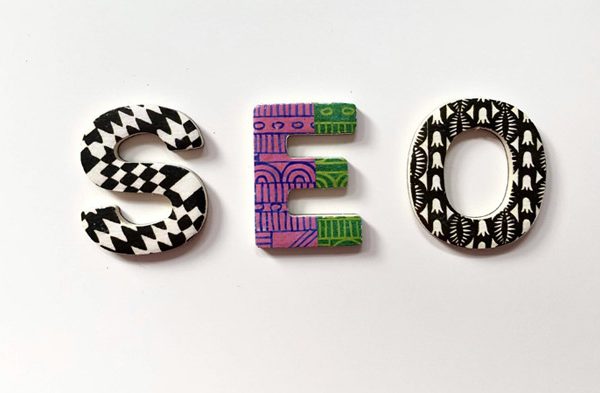Web design continues to evolve on an annual basis, as new technology and fresh ways of thinking replace out-dated methods. Compounding this evolution is the acceptance that a website’s presence lives or dies by the whims of the search engine, with any stragglers hit with a potential drop in rankings. To put it blunty, optional techniques become necessary the moment Google changes its rules, so it’s important to keep an eye on future web design trends for your website to adapt in good time.
Last year we offered our predictions on design trends that would take the internet by storm in 2018 and (having mostly been correct) are excited to do so again. Read on for the top 6 future web design trends for 2019, as predicted by Reactive Graphics!

A desire to stand out
After more than two decades of the internet, it makes sense that websites may begin to look the same in their efforts to provide the best experience. Contrary to this, we expect to see a rise in diversity in the coming year, with more websites using asymmetry to catch the eye and big typography in place of meaningless stock photography. Companies are beginning to learn that one size won’t fit all, and must strive to be memorable in order to attract new business.
Minimalist design will continue to grow too, using a combination of text, space and bold colour to provide unique visuals that break away from the popular ‘black on white space’ look. Couple this with the reserved use of parallax scrolling, a video background or full-screen slider and you have the makings of a site that’s primed and ready for 2019.
An increase in speed and performance
More important today than it was a few years ago, the speed of your website is not only a key ranking factor, but paramount to actually having your content read at all. Google has reportedly found that 53% of users will abandon a website after three seconds, which is a stark warning to any slow movers looking to increase their consumer base in 2019.
Thankfully, this is a requirement that more businesses and developers are beginning to wake up to. As such, we’re likely to see more websites that prioritise speed using smart, minimal code and optimised imagery to reduce loading where possible.
Retina imagery and animations
Speaking of optimised imagery, we’ve seen a surge in websites presenting big, crisp images that look fantastic on retina screens. This equates to a simple case of cause and effect – as technology improves and the adoption rate rises, you inevitably see an increase in companies willing to target that specific audience. This just means nicer imagery for all concerned.
While animation has graced many an ‘upcoming trends’ article and has yet to emerge as a web design staple, it’s nonetheless something you can expect to see grow as time goes on. Most sites probably won’t centre their entire content around fancy animations just yet, but you can expect to see them used on a smaller, subtle scale that won’t distract too much from the main primary content.

Greater customer focus
While the push for appealing visuals will always be at the forefront of design, recent times have seen a greater emphasis on the user-experience. Businesses are starting to understand that an effective website needs to guide the user on a journey; one that’s held together with tight content, few clicks and a powerful call-to-action. It’s at last becoming understood that potential customers need to be sold on the company’s service, by persuading them that it can solve a problem or fill a need in their lives.
The rise of the landing page is also very topical, as companies learn to advertise themselves and attempt to convert hesitant users into paying customers. Essentially, we can expect to see greater focus given to a website’s structure, with fewer menu tabs and less clicks needed to find relevant content.
GDPR compliance
Despite the due date of 25th May 2018 having long since passed, companies (small businesses in particular) are still playing catch-up in terms of GDPR compliance. To summarise the ruling laid out by the EU, users must remain in control of their online data, deciding whether it should be provided to third parties or held by a company at all. Not every site is as GDPR-friendly as it should be, however, and quite unlike the rest of the points on our list, this is something that’s required to change by law.
Solutions are currently available to websites playing catch-up (Mailchimp, for example, offers GDPR sign-up forms) so there’s very little excuse at this stage. While a few US-based companies initially swore off the European market to avoid dealing with the ruling in the short-term, GDPR compliance is set to increase around the world due to the sheer scale of the European market – it’s simply too big and too profitable to ignore.
The mobile web & progressive web apps

Even if your website responds on handheld devices, it’s worth checking its usability. With Google now placing greater emphasis on a site’s mobile version over its desktop counterpart, a crudely designed website that’s technically mobile responsive will no longer cut it long-term. The progressive web app (or PWA for short) is a fresh alternative to both the mobile web and the native app, such as one you would download from an app store. The PWA has already been picked up by the likes of Twitter, Forbes and The Washington Post and is in a very strong position moving forwards.
The progressive web app uses less data than a native app, loads swiftly and can be seen in search engines because it exists on the web. We have yet to see the upper limits of this technology, but given their many selling points and few disadvantages, PWAs could easily become the most effective answer to the responsive web in 2019.
Is your business prepared for the coming year?
The next 12 months look to be a very exciting time for web design and development, as consumers are finally put first and businesses look to break away from established norms. The future of web design won’t come without its challenges, which is why it’s important to have an online presence that’s attractive, modern and presents your business in the best possible light.
Reactive Graphics has continuously pushed for greatness in its web projects, delivering finished designs based on the best styles and methods around. If you require a website that can stand the test of time, then make the call to Reactive Graphics today!


